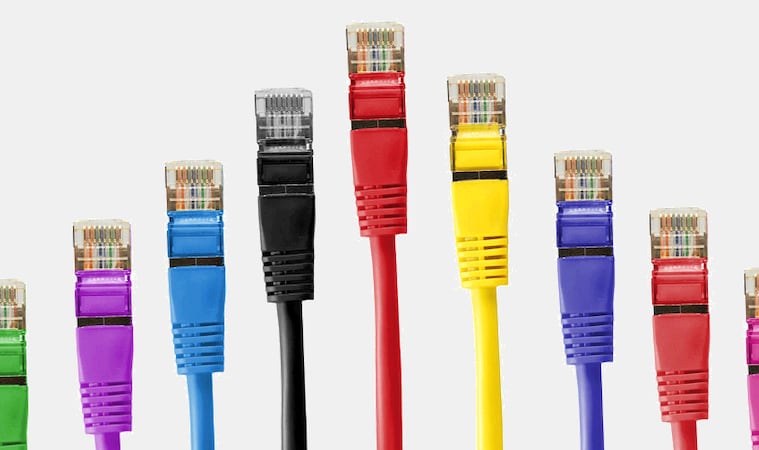SNMPv1, SNMPv2c, SNMPv3: All About SNMP
As the adoption of internet-enabled devices continues to explode across all manner of consumer and industrial applications, so too does the need to monitor the performance and accuracy of such devices on your networks.
At FrameFlow, we are acutely aware of the critical need to monitor the performance of IoT and IIoT devices and sensors, but we also know that such monitoring must be versatile and flexible enough to function well on existing and widely adopted network management protocols.
This is one of several reasons why FrameFlow IT systems and server monitoring software works so nicely with one the most tried and true networking protocols out there: SNMP.

What is SNMP?
SNMP stands for Simple Network Management Protocol, and was introduced in 1988 by a group of university researchers to provide monitoring capability for networked devices over TCP/IP-based networks. By 1990, SNMP was approved as an internet standard by the Internet Architecture Board (IAB) to address a clear and growing need for network management and has been widely adopted ever since.
Today, a host of vendors manufacturing thousands of different types of IP-enabled network devices functioning on various operating systems support SNMP as a core protocol to deliver critical data on the health, usage, reliability, service state, and performance of their devices in the field.
Large networks with thousands of different types of nodes can be difficult and time-consuming to manage and monitor. Many of these devices have their own proprietary monitoring systems, adding further layers of complexity, as IT staff grapple with keeping a grip on the performance of all kinds of devices and systems across their entire networks. This issue is only going to compound as adoption rates for IoT devices are predicated to proliferate exponentially in the next decade:
Leveraging the versatility of SNMP, FrameFlow allows you to monitor many different types of devices on your networks, ranging from servers, workstations, printers, routers, bridges, hubs, sensors and well, pretty much any type of networked device with an IP address, all within one easy-to-use dashboard and operating over SNMP or other popular network protocols.
Not only do we enable the monitoring of different types of devices in one place, but FrameFlow can also scale up to monitor tens of thousands of devices in one install.
FrameFlow Supports all Three SNMP Versions
SNMP, for example, has three main versions, each with its own set of pros and cons and associated implementation, maintenance, and management challenges.
SNMP v1
Since its introduction, nearly 30 years ago, SNMP v1 has been broadly adopted and provides basic functionality for data polling without using many resources, as it doesn’t include any encryption algorithms.
While this broad adoption makes SNMP v1 versatile and easy to use, the lack of encryption, especially in today’s security conscious IT environments, is a clear vulnerability for critical systems. For this reason, there is a growing trend in many organizations toward restricting the usage of SNMP v1.
Another drawback with SNMP v1 is that it runs on a 32-bit counter architecture, which may have been sufficient back in the day of 1990 but is very limiting on today’s gigabyte-sized networks.
SNMP v2
As network usage and demand quickly grew, SNMP v2 was introduced in 1993 supporting 64-bit counters. There are a few iterations of v2, with the most commonly used one being SNMP v2c (where the "c" stands for community). SNMP v2p and v2u are also out there, but these iterations are reserved for highly specialized uses. Although SNMP v2 greatly increased the usefulness of the protocol, it still sends critical data as clear text, so it doesn’t really address any of the security concerns of v1.
SNMP v3
In the late 90s and early 2000s, SNMP went through a major redesign with security top of mind. User accounts, authentication, and optional encryption data packages were some of the key components used to significantly enhance the security options in SNMP v3. With these new layers of security, however, the protocol became much more difficult to configure and manage and often requires increased CPU usage, especially when using short monitoring intervals and large numbers of SNMP messages.
With 64-bit counters and available encryption, SNMP v3 appears to be the ideal choice where possible; however, the increased complexity of v3, coupled with compatibility issues for some legacy network devices using v1 and v2, present some challenges for set-up and management to seamlessly monitor all devices on your networks.
FrameFlow to the Rescue
Fortunately, FrameFlow can easily handle all three versions of SNMP and configuration is a simple point-and-click process through our clear and intuitive dashboard. Equally appealing is the fact FrameFlow can centralize the monitoring of all your networked devices into one platform with streamlined alerts, coming in at customized rates to suit the needs of your various team members. Do you have thousands of devices on your networks? No problem, FrameFlow also scales to tens of thousands of devices on a single install of our software without minimal impact on CPU usage… and we don’t use agents.
Still not convinced? Why not give FrameFlow a free 30-day spin, no obligation or credit card required!